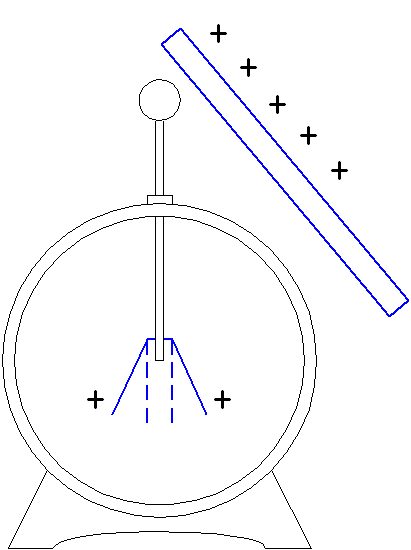An electroscope is a device used to detect electric charges, which can detect whether an object is electrically charged and estimate the magnitude of the electric charge.
An electroscope is a device used for detecting electric charges, which allows one to determine whether an object is electrified and approximately estimate the magnitude of electric charges. The device is based on the interaction between charged objects.
The first electroscope was created in England by physicist William Gilbert around 1600. In 1754, English inventor John Canton created an electroscope with a little ball.
The principle of operation of the electroscope
The principle of the electroscope is based on the fact that like-charged objects repel each other.
An electroscope consists of a metal rod with two strips of paper or aluminum foil suspended from it. The rod is fixed with an ebonite stopper inside a cylindrical metal case, which is closed with glass covers.
When a charged object, such as a rubbed glass rod, touches the stem of an electroscope, electric charges distribute along the stem and the leaves. Since objects with the same charge repel each other, the leaves of the electroscope will diverge at a certain angle due to the repulsive force. The greater the magnitude of the electroscope’s charge, the stronger the repulsive force on the leaves, and the greater the angle of divergence. Therefore, by measuring the angle of divergence of the electroscope’s leaves, one can infer the magnitude of the charge on the electroscope.
If an object with an opposite charge is brought near a charged electroscope, the angle between the leaves will begin to decrease. Therefore, the electroscope allows one to determine the sign of the charge on the charged object.
For more accurate measurements of the magnitude of electric charge, electrometers are used.

